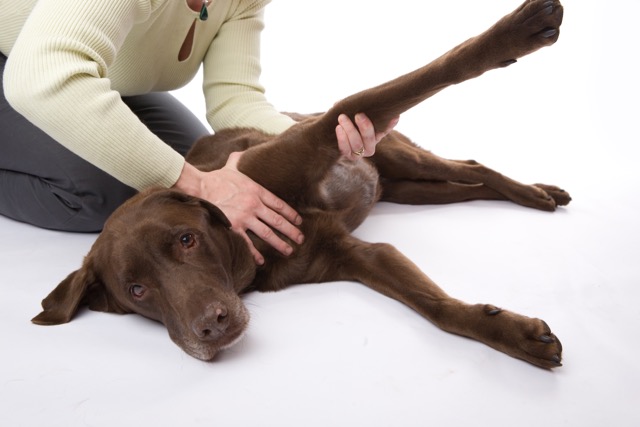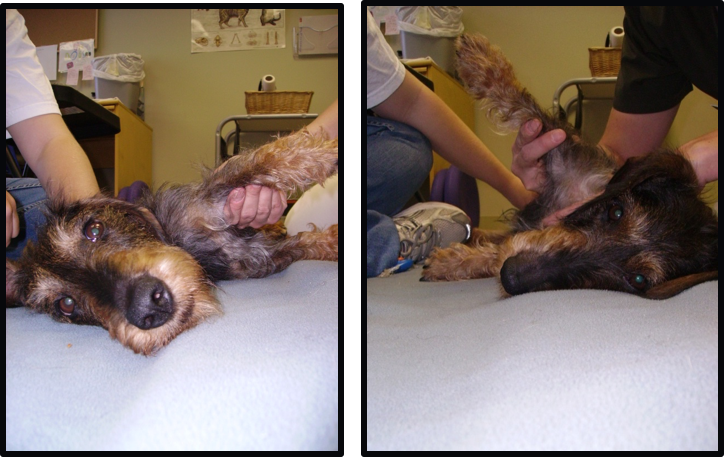Abduction Angles... Technique is important!
07 Dec 2019

For many years, I’ve been teaching canine rehab students how to assess glenohumeral abduction angles. And for years, I hear myself say the same thing. “More Extension!” I’ve found it interesting to see how people perform this technique, and I’ve witnessed such differences in technique and subsequently differing results.
Well, there is a research article that looked at exactly this phenomenon.
Jones SC, Howard J, Bertran J, Johnson B, Pozzi A, Litsky AS, Wittum TE, Kieves N. Measurement of Shoulder Abduction Angles in Dogs: An Ex Vivo Study of Accuracy and Repeatability. Vet Comp Orthop Traumatol 2019; 32(06): 427-432.
Objective: The aim of this study was to determine the accuracy and repeatability of the shoulder abduction test and to assess the effect of transection of the medial shoulder support structures in canine cadavers.
Materials and Methods: The shoulder abduction angle was measured by three separate observers, both with the shoulder extended and at a neutral angle. Shoulder abduction was then measured, using craniocaudal fluoroscopic images. Arthroscopy was performed in all shoulder joints, with the medial support structures transected in one shoulder of each dog. The three observers again measured shoulder abduction angles in all dogs. Shoulder abduction was measured again using fluoroscopy. Accuracy and repeatability of the abduction test were assessed using linear mixed models.
Results: All three observers had different measured abduction angles when compared with fluoroscopy (p < 0.01); however, the experienced surgeon had an error of only 2.9°. Inter-observer repeatability was poor, with all three observers having different abduction measurements (p < 0.001). Intra-observer repeatability, however, indicated no differences on repeated measurements (p = 0.26). Placing the shoulder at a neutral standing angle, and transection of support structures caused an average increase in abduction by 8.2° (p < 0.001) and 4.4° respectively.
Conclusion: Significant variation exists between observers performing this test, increased accuracy seen in the more experienced observer. Shoulder flexion angle can significantly affect measured abduction angles.
So, here’s is my advice on how to perform a true abduction test. Start behind the dog, with the dog in lateral recumbency. First, extend the shoulder. Block the front of the scapula to be sure that you are getting pure glenohumeral extension. Then as you move the humerus into abduction, you need to use the thumb of your hand that is blocking the scapula, to push down on the acromion to keep it from rising up as you abduct.
So that’s your tip! Happy shoulder measuring!


